As summer's long hot days give way to fall's shorter, cooler ones, sedums are having their moment of glory. Many bursting into starry flowers, or subtly changing leaf color.
Beautiful plants that thrive on neglect, sedums are commonly known as stonecrops. Many are super cold-tolerant, and are fine overwintered outside. Plant them into the ground or in containers, in partial to full sun. Make sure to amend soil so that it has excellent drainage. For more on how to plant sedums in containers, here’s a short video.
Of course, start with everyone’s favorite ‘Autumn Joy’ sedum, shown at right. (And channel your inner Paula Pryke by using them as cut flowers with autumn grasses!) But also check out these six varieties we recommend for planting right now.
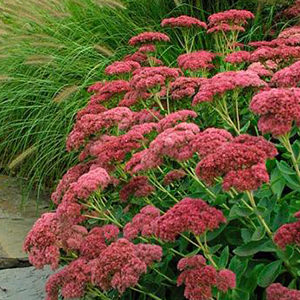
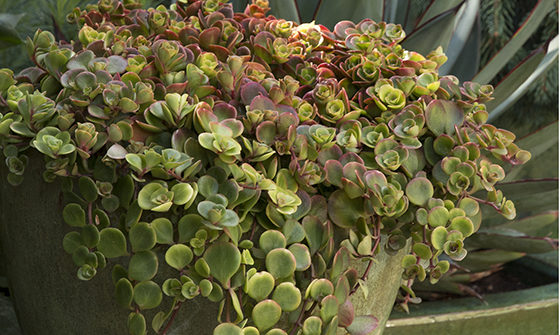
Chinese Sedum
(Sedum tetractinum ‘Coral Reef’)
This mat-forming succulent with trailing stems turns a showy bronze and burgundy color in fall. Starry flowers dot the foliage in late summer, followed by russet seed capsules. Herbaceous perennial.
Partial to full sun. Reaches up to 3 in. tall, spreading 12 in. wide. Zone: 5 – 8
Use: Let spill from containers or tumble across rock gardens.
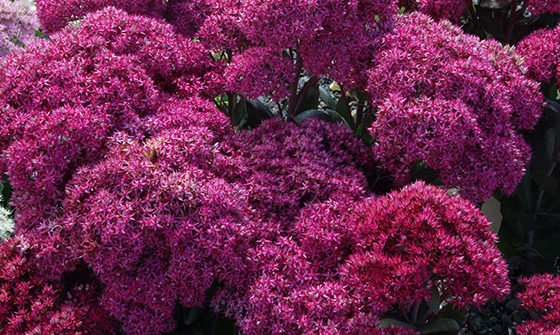
Mr. Goodbud Stonecrop
(Sedum ‘Mr. Goodbud’ P.P. #17,671)
Very large, dense heads of light purple buds contrast with dark purple flowers on a more compact, shorter stature plant. Herbaceous perennial.
Full sun. Clump forming 18 in. tall and 14 in. wide. Zone: 4 – 9
Use: Wonderful in a mass planting or perennial border.
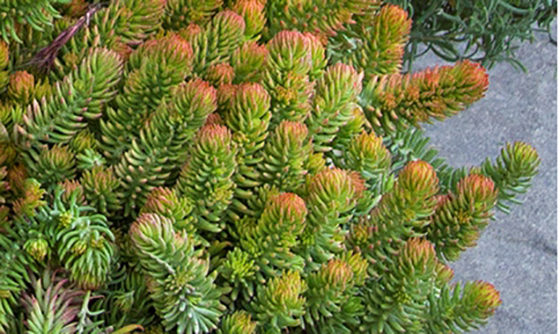
Angelina Stonecrop
(Sedum rupestre ‘Angelina’)
Brilliant chartreuse-yellow, needle-like foliage forms a quick groundcover. In winter, foliage turns orange in northern climates. Herbaceous perennial.
Partial to full sun. Reaches up to 6 in tall and 3 ft. wide. Zone: 3 – 11
Use: Adds cheery color to containers, dry slopes and flowering borders, as well as being a good bulb cover.
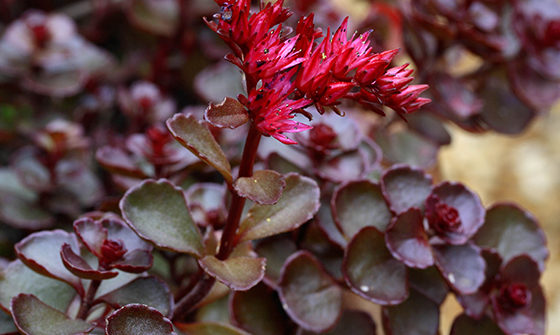
Voodoo Stonecrop
(Sedum spurium ‘Voodoo’)
Rich, deep mahogany-red leaves and glowing rosy-red flowers provide bold, contrasting color on this easy care groundcover. Herbaceous perennial.
Partial to full sun. Quickly reaches up to 6 in. tall and 24 in. wide. Zones: 3 – 9
Use: Lovely paired with ornamental grasses in containers and borders, or spilling over rock walls.
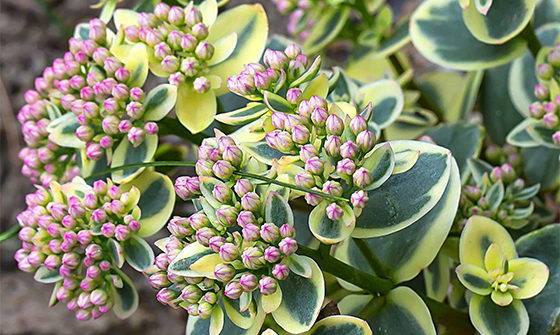
Sunsparkler® Lime Twister Sedum
((Sedum ‘Lime Twister’ Plant Patent #26,895)
Ground-hugging, hardy with two-tone lime green leaves edged in creamy yellow. Soft pink flower clusters bloom in late summer. Herbaceous perennial.
Full sun. Reaches up to 4 in. tall and 18 in. wide. Zone: 4 – 9
Use: Rock garden, between stepping stones, or in the crevices of dry walls.
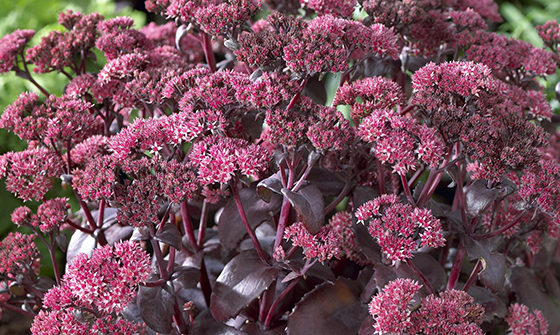
Black Beauty® Stonecrop
(Sedum Black Beauty®)
Striking, deep bronze to black foliage— the darkest-leaved sedum available— with masses of reddish-pink, late-summer flower heads. Herbaceous perennial.
Partial to full sun. Reaches up to 20 in. tall. Zone: 3 – 9
Use: Add clumps to beds of late bloomers such as asters and coreopsis, or use in containers.
Keeping Sedums Happy
- Sedums hail from the mountainous regions of Europe, parts of Russia, and Eastern Asia. This means they like soil that's not too rich, and drains well. Add pumice to garden beds and container mixes (here’s good info on how much).
- Low-water doesn't mean no-water. During dry times, water small pots about once a week and large pots about every two weeks.
- Feed yearly at the beginning of the plant’s growing season with a well-balanced organic fertilizer at half the recommended dosage.
- In fall, allow seed heads that follow flowering to remain into winter (’cause they look awesome, and feed foragers).
- In spring, shear stems back to just above soil line; new growth will appear from the plant’s crown.
- In late spring to early summer, cut sedums back by half to produce bushier plants that flower a little later. While you’ll delay flowering, the resulting thicker stalks can help support the heavy flower heads to come.
- After three or four years rejuvenate overgrown plants by dividing in spring. Dig them up, split into smaller pieces and replant.
Image Credits




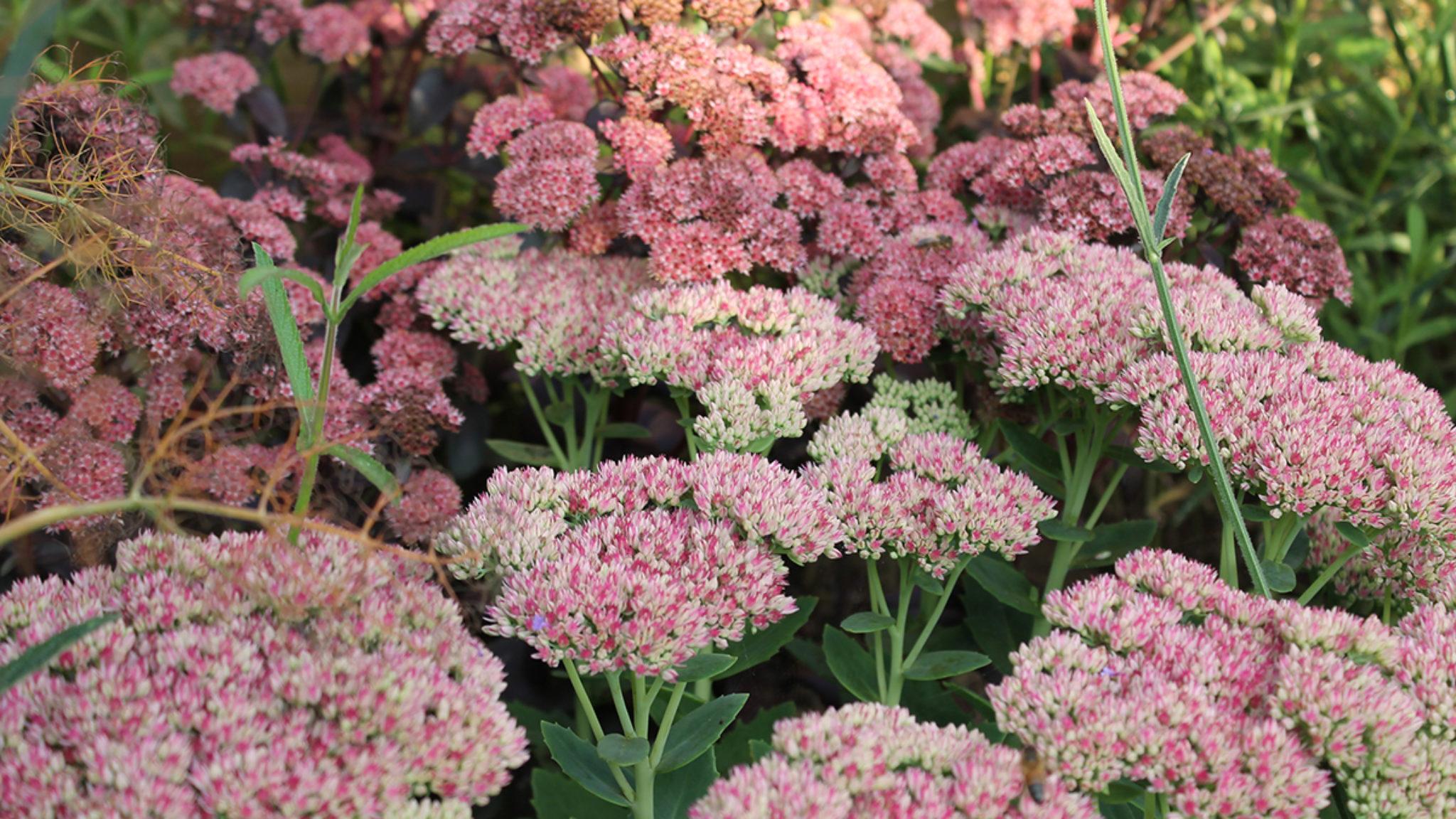
Please login to comment.
Don't have an account?
Sign Up for free